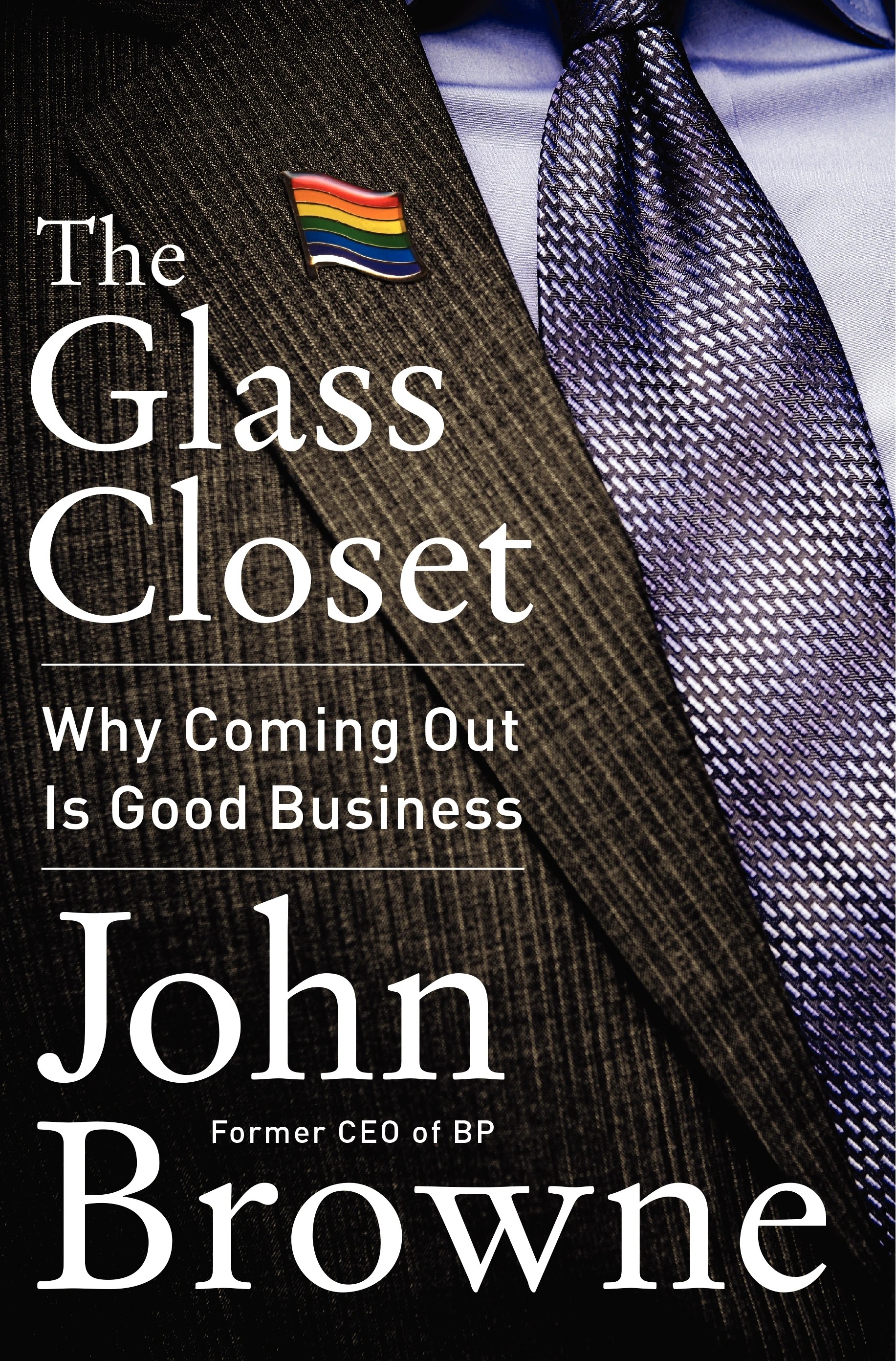
On 2 June 2013, I wrote an editorial in the Financial Times arguing the case for gay marriage. The House of Lords would vote on a measure legalising same-sex marriage the following day. I supported the bill as a pragmatic legislator, as a gay man and as a human being. But I also supported it because I am a businessman.
Business does not usually take a position on the institution of marriage. But, in my time as chief executive, I learned that any policy that fosters an inclusive environment makes good business sense. Paul Reed, my former colleague at BP and now a senior executive there, puts it best: “I don’t want people saving a quarter of their brain to hide who they are. I want them to apply their whole brain to their job.”
Inclusion creates a level playing field, which allows the best talent to rise to the top. Respecting diversity of sexual orientation and gender identity should therefore be recognised as a matter of strategic importance to every company competing in the global market for talent. Minorities who are not treated fairly and who do not feel included will choose to work elsewhere. More and more companies now understand that. As a result, they are providing greater support for the rights of LGBT employees.
In November 2008, voters in California had the option to vote on Proposition 8, which would overturn the right of two people of the same sex to get married in the state. Ahead of the vote, only four big businesses and organisations publicly expressed their support for same-sex marriage. By March 2013, when the United States Supreme Court heard cases on the Defense of Marriage Act (DOMA) and Proposition 8, a total of 278 employers, including more than 200 companies, had given their support to ‘equal marriage’ in an amicus brief filed with the Court.
In that brief, companies including Apple, Citigroup, Microsoft, Morgan Stanley and Starbucks argued that “far from creating uniformity, DOMA obliges employers to treat an employee married to someone of the same sex and an employee married to someone of a different sex unequally”, noting that business outcomes depend “on the talent, morale and motivation of the workforce”.
The behaviour of companies today suggests that the risk of losing the support of those opposed to LGBT equality is now outweighed by the benefits of inclusion. In January 2012, Starbucks announced that its support of same-sex marriage “is core to who we are and what we value as a company”. By March, the National Organization for Marriage (NOM), earlier formed specifically to support Proposition 8, had launched its ‘Dump Starbucks’ campaign, which called on members to boycott the coffee giant. The company had, it said, “declared a culture war on all people of faith” and that its customers were funding a “corporate assault on marriage”.
Within a week, 10,000 people had joined NOM’s Facebook page, and more than 23,000 had signed its online petition. One year later, at the Starbucks’ annual shareholders meeting in Seattle, an angry shareholder stood up to complain. He suggested that the company’s support for same-sex marriage had contributed to “disappointing” earnings in the first full quarter after the boycott. Starbucks’ chairman and chief executive Howard Schultz replied that “not every decision is an economic decision … We employ over 200,000 people in this company and we want to embrace diversity. Of all kinds.” As the audience cheered, he left the off ending shareholder with some parting words. “If you feel, respectfully, that you can get a higher return than the 38% you got last year, it’s a free country. You can sell your shares.”
Leaders on Wall Street have also been outspoken. In 2012, Lloyd Blankfein, the chairman and CEO of Goldman Sachs, appeared in a video supporting same-sex marriage. The video was produced by the Human Rights Campaign, the largest LGBT advocacy group in the US. Blankfein asked viewers to “join me and a majority of Americans who support marriage equality”. He later admitted that because of that statement the firm had lost at least one major client, whose leadership objected to his stance on religious grounds.
He continued to articulate his business logic in a round of media appearances, implying that the loss of a client matters less than the ability to recruit the best minds. “I’m trying to have a neutral workplace environment that is as inviting as it can be for all people,” he told CBS News. “To the extent there are other companies or industries which are going to be hostile and repellent to people who are talented … they’re just giving us a comparative advantage.”
Diversity and inclusion are not the same thing. Having a certain number of employees from diverse backgrounds will do little to help a business unless those employees are made to feel welcome and valued. Inclusion is undoubtedly more difficult when it comes to LGBT people. A company can tell if its employees and applicants are male or female, or Asian or Hispanic. But it is not always clear who is a member of the LGBT population and who is not. It is therefore crucial that a company’s support for equality and inclusion is unambiguous.
In the U.S., around 80% of LGBT respondents to one survey said that when applying for a job it was ‘very important’ or ‘fairly important’ for their potential employer to have an LGBT equality and diversity policy already in place. In the U.K., 72% of respondents agreed.
Julia Hoggett, a managing director at the London office of Bank of America Merrill Lynch, remembers how important the right tone of acceptance was to her in the mid- to late 1990s, before she had come out. Presented with job offers at two separate banks, she compared salaries, training programmes and locations. She also assessed whether being open with her sexual orientation would put her at risk. “In one particular clause of the contract, one firm effectively said ‘we will not sack you on the grounds of sexuality’ and the other firm remained mute,” she remembers. “The other firm only said what it had to under the law, which was that you could not discriminate on the grounds of gender and race. I chose to work for the firm that protected LGBT employment rights because I felt that it would be a more embracing place, in part since they had gone through the thought process to include protections for lesbian, gay and transgender employees in the U.K. when the law did not require them to do so.”
The war for talent is the principal reason that an increasing number of Fortune 500 companies see LGBT inclusiveness not as an option but as a necessity. In 2002, 61% of those companies included sexual orientation in their corporate policies. Only 3% included gender identity. By 2014, 91% prohibited discrimination on the basis of sexual orientation and 61% protected employees from discrimination based on gender identity. There was also a dramatic jump in the number extending company healthcare benefits to same-sex partners. That figure grew from 34% to 67% over the same period.
Policies are an important place to set the right tone. Their application is measurable and is capable of being tracked, and that provides a concrete benchmark for assessing a company’s commitment to its gay employees. Good companies can transcend the variety of legal frameworks in which they operate, and can make their policies work even where legislation does not require them to take action. That is essential for any business that wants to attract high achievers from all backgrounds.
The Human Rights Campaign understood that when it launched its Corporate Equality Index (CEI) in 2002. It laid out its expectations of how U.S. companies should treat their LGBT employees and LGBT consumers. It then evaluated employers annually against these expectations.
In the first year of the CEI, only 4% of the companies they examined obtained perfect scores. Those companies included Intel, JPMorgan Chase and Xerox. By 2011, 55%, or 337 in total, had adjusted their policies and benefits systems to obtain a perfect score. The list of those companies receiving the highest marks included firms from traditionally conservative sectors; among them was the mining and metals giant Alcoa, and oil and gas firms BP, Chevron and Shell. By contrast, in 2012, oil and gas giant Exxon became the first company ever to achieve a negative score, a position it maintained for the following two years.
Competitive rankings like the CEI help provide important incentives for change. In 2005, the defence contractor Raytheon became the first company in its sector to obtain a perfect CEI score. The company was widely praised for its achievement, especially as it operates in a sector dominated by a male, blue-collar workforce, traditionally not a comfortable environment for LGBT employees. One year later, three of Raytheon’s competitors, Boeing, Honeywell International and Northrop Grumman, introduced changes to help them achieve the same success.
The CEI criteria have become more demanding over time to keep up with society’s growing expectations for the treatment of LGBT people. Companies are therefore forced to keep improving their policies to stay competitive. That is encouraging, as inclusion requires constant reinforcement and vigilance.
Changes at several companies have been remarkable. The conservative city of Louisville, Kentucky, is not the first place you would think of when discussing LGBT inclusion. Nor is Brown-Forman, the beverage business that owns labels including Jack Daniel’s and Finlandia vodka. But when it received a score of just twenty on the 2009 CEI, its leaders took notice. The company’s newly appointed chief diversity officer, Ralph de Chabert, worked through each of their policies to improve their score, seeking advice from his counterparts who had overseen changes at other companies.
He dispelled the myth that providing same-sex partner benefits or covering the cost of gender reassignment surgery would be as expensive as some people feared. At the end of the day, with so many other companies making changes, it became an issue of “Why aren’t we?”
The company became the first in Kentucky to achieve a perfect CEI score. More important are the changes de Chabert sees on the ground. Gay employees now bring their partners to work events, and some have told him they feel more accepted at the company than they do in their own families. This is also reflected in the fact that the company’s LGBT employee group has more members who are heterosexual supporters than members who identify themselves as LGBT. Heterosexual employees have come to understand that they need their gay colleagues as much as their gay colleagues need them.
“It’s far more costly for people to be in the closet, it’s just that you don’t see the impact,” de Chabert says. “The impact is that you don’t get the creativity, productivity and innovation that you would have gotten otherwise.”
Recognize your brand’s excellence by applying to this year’s Brands That Matter Awards before the early-rate deadline, May 3.
